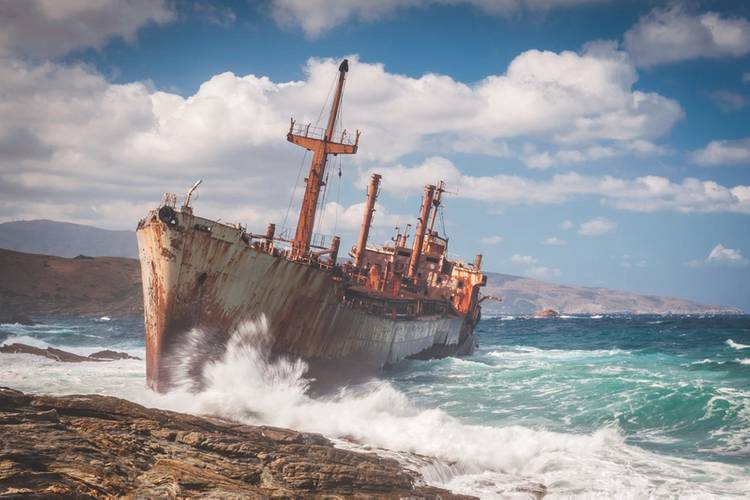Salvage and marine firefighting are complex response efforts often undertaken in adverse weather and sea conditions. While no two oil spill responses are the same, the diversity of variation between any two oil spill responses is not near as great as the diversity of any two salvage and marine firefighting responses.
As a result, salvage and marine firefighting response providers must plan for and anticipate a wide range of variation in what will be required to address their portion of a marine casualty.
The Oil Pollution Act of 1990 (OPA 90) does not specifically mention salvage and marine firefighting, but it does state that vessel response plans shall “identify and ensure by contract or other means approved by the President that availability of private personnel and equipment necessary to remove to the maximum extent practicable a worse case discharge (including a discharge resulting from fire or explosion), and to mitigate or prevent a substantial threat of such a discharge.”
The U.S. Coast Guard advance notice of proposed rulemaking of August 30, 1991 requested comments and suggestions regarding vessel response plans for, among other things, emergency response scenarios, e.g., fires/explosions and salvage operations.
The June 19, 1992 notice of proposed rulemaking stated that the Coast Guard considers salvage and firefighting capabilities to be essential to deal with a worse case discharge. The proposed rule required vessel owners and operators to identify and ensure the availability of, through contract or other approved means, both private salvage and firefighting capability for areas in with the vessel operates. It did not propose specific response times or equipment requirements due to the then-current shortage of such response equipment on a nationwide basis. The interim final rule for vessel response plans was promulgated on February 5, 1993. That rule implemented the salvage and marine firefighting provisions as proposed the previous year, with no specific response times or equipment requirements. So things remained for a number of years. On January 12, 1996, the vessel response plan rule was finalized. Among the various changes from the interim rule, a requirement was added providing that on or after February 18, 1998 the salvage and marine firefighting resources must be capable of being deployed to the port nearest the area in which the vessel operated within 24 hours of notification, but this requirement was suspended three times and never actually entered into effect.
A public meeting was held on August 5, 1997 to address issues related to salvage and marine firefighting capabilities. Participants identified three issues that they felt the Coast Guard needed to address: (1) defining the salvage and marine firefighting capability that is necessary in the vessel response plans; (2) establishing how quickly these resources must be on-scene; and (3) determining what constitutes adequate salvage and marine firefighting resources.
In 1994, the Marine Board of the National Academies completed its Reassessment of the Marine Salvage Posture of the United States. Among other things, that report recommended that the Coast Guard, in consultation with the US Navy Supervisor of Salvage, develop and promulgate a list of active salvors in accordance with the general criteria proposed in the report. The list then should be used to prequalify salvage companies for inclusion in vessel owners’ contingency plans for casualty response and may include salvors that specialize in specific aspects of salvage. As a matter of corporate policy, companies needing salvage services should endeavor to contract for salvage services with these professional salvage companies. The report basically endorsed the Coast Guard’s program for classifying oil spill removal organizations (OSROs) and recommended that the Coast Guard utilize that program for the salvage and marine firefighting program.
When the salvage and marine firefighting rules were proposed on May 10, 2002, the Coast Guard placed the onus of determining the adequacy of salvage and marine firefighting resource providers squarely on the vessel owners and operators. No explanation was provided for the agency’s rejection of the Marine Board’s recommendation in this regard, although it appears that the Coast Guard believed that it did not have the resources to properly evaluate and classify these additional resource providers. It is wholly unrealistic, though, to expect the vessel owners and operators are better situated than the Coast Guard to evaluate the adequacy of salvage and marine firefighting resource providers. Many of these owners and operators are small entities and the burden of determining the adequacy of the resource providers can exceed their capability. In addition, since there are only four national full-service providers of salvage and marine firefighting services and a handful of specialized or regional providers, a classification program for these elements would be relatively straightforward.
In the December 31, 2008 final rule implementing the salvage and marine firefighting requirements the Coast Guard adopted a system of measuring response times in two ways. For casualties off the shores of the 48 continental states (CONUS), response time was measured based on the distance from shore (the nearest point of land). For casualties off the shores of other U.S. locations (i.e., Alaska, Hawaii, Guam), response time was measured based on the distance of the casualty from the relevant Captain of the Port (COTP) city. A comment stating that the proposed response time regime was inappropriate for certain CONUS locations was rejected with the statement: “All continental U.S. (CONUS) coastlines are covered by this final rule and this rule does not impose any additional capital requirements on industry.”
While that statement may technically be true, it did not respond to the relevant comment. In fact, there are various CONUS locations that are quite distant from a COTP port or other port where significant salvage and marine firefighting resources may be located. Examples of such distant CONUS locations include, but are not limited to: Crescent City, Calif.; the entrance to the Strait of Juan de Fuca; Fort Pierce, Fla.; Bar Harbor, Maine; and many portions of the Great Lakes and Western Rivers.
It is therefore recommended that the Coast Guard initiate a rulemaking to amend the salvage and marine firefighting regulations to reflect reality. Among other things, the Coast Guard should adopt the Marine Board recommendation mentioned above and institute a classification system for salvage and marine firefighting resource providers, similar to that already in place for OSROs. It should also revise the response time requirements of CONUS locations so as to measure response times based on the distance from the nearest COTP city. The current regulations, at least in these respects, are highly aspirational and unrealistic.
The Author
Dennis L. Bryant is with Bryant’s Maritime Consulting, and a regular contributor to Maritime Reporter & Engineering News as well as online at MaritimeProfessional.com.
t: 1 352 692 5493




















